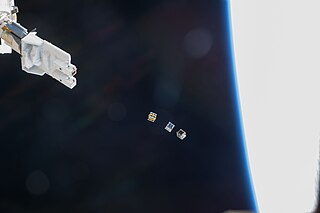
Television in Vietnam began to appear in the mid-1960s in Saigon, with the appearance of Saigon Television Station. In 1970, in the North, Voice of Vietnam broadcast the first test television program. In the late 1970s, color television was introduced and broadcast experimentally. Today, television in Vietnam is available in many modes of broadcasting, with many national and local channels, broadcast or pay with more than 200 channels available to viewers. Vietnam completed the digital television transitions on December 28, 2020.

Huỳnh Minh Hưng, commonly known by his stage name Đàm Vĩnh Hưng, often referred to by his nickname Mr. Dam, is a Vietnamese singer. He won 2 Dedication awards and multiple awards in Vietnam. Besides V-pop, he also performed many pre-war songs, Trinh Cong Son's songs and yellow music. He is one of the most highly paid singers in Vietnam and some of his alleged statements have appeared in tabloids.

Đinh Thanh Trung is a Vietnamese former professional footballer who mainly played as an attacking midfielder or winger.

Quế Ngọc Hải is a Vietnamese professional footballer who plays as a centre-back for V.League 1 club Becamex Bình Dương and captains the Vietnam national team. He is considered one of the best defenders in V.League 1 history.

PicoDragon is a small satellite that followed the 1U type of CubeSat program built by the Vietnam National Satellite Center (VNSC) which belongs to VAST and operated in space for 3 months.
MicroDragon was a satellite built by the Vietnam National Satellite Center (VNSC).

Vũ Cát Tường is a Vietnamese singer-songwriter, dancer, record producer, television judge and businesswoman who was a runner-up on season 2 of The Voice of Vietnam. During the music career, she has received 6 nominations, won 2 Dedication Music Awards and an inclusion on Forbes Vietnam's 2018 30 Under 30 list, along with many other awards. She is the first Vietnamese artist to have an album distributed by Universal Music Group, and VCT is also the first Vietnamese artist to have a bilingual album recorded in one of the most famous record studios in the world - United Recordings.

The COVID-19 vaccination in Vietnam is an ongoing immunization campaign against severe acute respiratory syndrome coronavirus 2 (SARS-CoV-2), in response to the ongoing pandemic in the country. Following the approval of the Oxford–AstraZeneca COVID-19 vaccine on 30 January 2021, vaccinations commenced on 8 March 2021, and will continue throughout the year with the goal of vaccinating 80% of the population by June 2022. The Sputnik V was later approved for use on 23 March 2021. The Sinopharm BIBP vaccine was approved for emergency use on 4 June 2021, while Pfizer–BioNTech COVID-19 vaccine, Moderna COVID-19 vaccine and Janssen COVID-19 vaccine were approved on 12 June 2021, 29 June 2021, and 15 July 2021, respectively. Vietnam approved Abdala vaccine from Center for Genetic Engineering and Biotechnology on 18 September 2021, and Covaxin from Bharat Biotech on 10 November 2021.

VTC Digital Television Network, or Vietnam Digital Television Network is a Vietnamese television network currently owned by the Voice of Vietnam. Launched on August 19, 2004, it is recognised as the second national television network in Vietnam and the first to utilise a digital terrestrial network for broadcasts.

Bùi Hoàng Việt Anh is a Vietnamese professional footballer who plays as a centre-back for V.League 1 club Công An Hà Nội and the Vietnam national team.

Jean Almeida Santos, commonly known as Janclesio or just Jan, is a Brazilian footballer who plays as a center-back for V.League 1 team Becamex Bình Dương.

Typhoon Yagi, known in Vietnam as Typhoon No. 3 of 2024, originated from a tropical depression northwest of Palau, entered the South China Sea, and rapidly intensified into a super typhoon. By 7 September, Yagi made landfall in Vietnam's Haiphong City and Quảng Ninh Province, causing catastrophic damage to lives and property. The typhoon and post-typhoon severe weather brought strong winds and heavy rainfall to the entirety of northern Vietnam, triggering a series of adverse effects such as flash floods and landslides in mountainous areas. It also resulted in historic floods in northern Vietnam in early September 2024.











